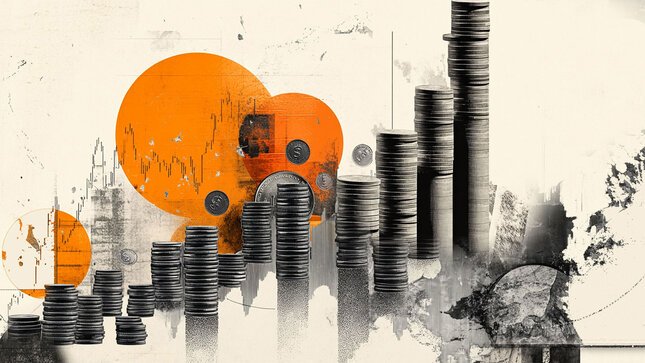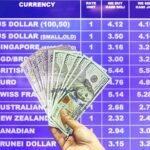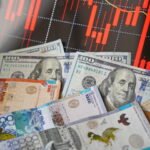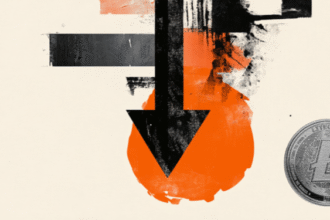Liquidity is important
The world’s most bureaucratic liquidity trap — the U.S. government shutdown — finally looks set to end, and markets can smell the thaw. Futures in Hong Kong and Sydney opened firmer, Tokyo more measured, as the Senate’s temporary funding bill heads to the House. If passed, it would keep Washington’s lights on through January, setting up what feels like an overdue liquidity pulse for risk markets starved of fresh data and flow.
-1762907508847-1762907508848.png&w=1536&q=95)
Data via MarketWatch
This has been one of the more curious shutdowns in modern memory. Forty-one days without data, without a functioning Treasury tap — and yet the S&P 500 has risen 2%. That’s not rational repricing; that’s structural flow. When oxygen thins, algo lungs adapt. And now, with reopening imminent, the market’s Pavlovian reflex is simple: buy the dip and bet on liquidity.
My best guess? The same bulls who’ve been quietly feeding under the blackout will step up again — thinking, correctly in my view, that the real short term catalyst sitting just under the market’s skin is a government reopening — not because it changes the economy overnight, but because it juices GDP optics going foward and, more importantly, cracks open the TGA spigot that’s been holding back flow. And in this market, liquidity always gets bought before logic catches up.
The cash bond market was closed for Veterans Day, so Treasury futures carried the signal: yields slipped, the dollar faded, and rate-cut odds for December climbed above 60% after the ADP jobs data pointed to softening labour momentum. Goldman now pegs October NFP at –50 k — the weakest print since December 2020 — building on the soft ADP release and fading Small Business Optimism, all of which put a strong bid into Treasury futures. That had plenty of folks looking over their shoulders, but for the Dow and the non-AI flyers, bad news was good news — exactly how it usually trades in a rate-cut environment. The USDJPY briefly spilled lower before settling back near ¥154 — the perfect mirror of a market that wants to rally but still fears the carry trade hangover.

Tech, as ever, remains the battleground. Nvidia dropped 3% after SoftBank sold its entire stake — reportedly to fund new AI bets via OpenAI and other ventures — a symbolic rotation of capital within the same illusion. Oracle (ORCL) made uglier headlines, as its debt was downgraded to “sell” by Barclays, reflecting growing anxiety about AI-linked leverage and ballooning capital expenditures (CapEx) commitments. Credit stress is spreading quietly but persistently: Bloomberg’s distressed-debt index keeps creeping higher, and talk of triple-hook private-credit deals under review is becoming standard desk chatter. It seems, finally, that folks are starting to do the math.

Still, the Dow refused to flinch — in fact, it soared to an all-time high, one of the strongest Dow/Nasdaq relative days of the year. That divergence says plenty: traders rotating out of the AI darlings and into the broad U.S. economy — from momo to meatspace. Equal-weight S&P outperformed, suggesting breadth beneath the surface even as MegaCaps sagged.
Meanwhile, the volatility complex is bleeding out. The VIX and VVIX keep sliding, hedges are being cut, and implied correlations have collapsed — all signs of a market recalibrating toward calm, or at least pretending to.

Dealer gamma remains positive at current levels, meaning dips are met with buying, compressing intraday swings and feeding the slow melt-up dynamic. As long as the S&P 500 holds above the 6,800 pivot, this feedback loop stays intact; below that, it reverses — the flow gods giveth and taketh away.
Gold caught its breath at $4,100 — a line that’s likely to become a sacred trench for the physical hoarders and tactical futures shorts alike.
Over the short term, weak U.S. data, which will be exacerbated by the delayed backlog that follows once Washington reopens, is setting up a reflexive “bad news is good” loop for gold. The logic’s simple: softer prints strengthen the case for near-term rate cuts, and with real yields already leaking lower, that’s oxygen for the metal.
Oil crept higher toward the top of its recent range, helped by refined-product strength and a sigh of relief from traders eyeing the Senate’s progress. The narrowing backwardation in WTI and Brent hints that the market is finding equilibrium rather than breaking — a quiet confirmation that no one’s ready to pull the rug just yet.
OPEC is scheduled to release its monthly market analysis on Wednesday (Link to MOMR), with the International Energy Agency issuing its annual outlook on the same day.
Crypto joined the pause, with Bitcoin testing $107 k before slipping to $103 k — still dancing in rhythm with risk, not apart from it. The whole market, from gold to gamma, seems to be waiting for the same thing: confirmation that liquidity is once again flowing downhill.
Retail is still the invisible hand pushing the tape. Options data shows retail participation at 54% of total volume — an all-time high.

And seasonals favour the dip-buyers, and flows suggest a “most hated rally ever” may be precisely what we’re building toward. Corporate buybacks are ramping as blackout windows lift, creating a mechanical bid that mutes every wobble.
So Asia wakes to a market that’s been bent but not broken. Tech wobbles, credit creaks, data is missing — and yet price resilience remains almost defiant. The tape is whispering the same old truth: in modern markets, liquidity finds a way. And as Washington’s lights flicker back on, the machines will hum again — not because fundamentals demand it, but because the bulls never left; they just went quiet until the TGA tap turned back on.





















